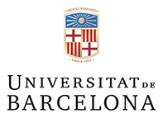Durum wheat ears perform better than the flag leaves under water stress: Gene expression and physiological evidence

Plant Physiology and Molecular Biology
Plants growth is sustained by water, CO2 and mineral elements, in addition to light. Water acquisition, CO2 assimilation and nutrient uptake are tightly coordinated processes which are greatly influenced by the environmental growth conditions. Projections of climate change by IPCC (www.ipcc.ch) in the Mediterranean basin predict extreme weather events. These include higher temperatures, heavy precipitation events and increased flooding, more frequent and intense droughts and soil degradation, which can negatively affect crop yield. One of the biggest challenges facing agricultural research in the coming decades will be the sustainable improvement of agricultural production in a changing environment in order to ensure food security for a growing population. Salinity caused by inadequate irrigation practices and low quality water, together with a high evaporative demand is an increasing problem in the Mediterranean agriculture. The responsiveness of cereals (i.e. bread and durum wheat, barley) to such changes in the Mediterranean basin is especially important because (i) they are one of the most widespread crops in this region, used for the production of traditional staple foods; (ii) their production is already constrained by late-season drought stress during grain filling; and (iii) they are C3 plants, in which the effect of CO2 enrichment is more pronounced. Additionally, we are collaborating with African Institutions in the development of high-throughput phenotyping platforms in maize under abiotic and biotic stresses in subtropical regions (Zimbabwe, Kenya, etc.).
One of the objectives of our research is to understand how cereal crops respond to a wide range of growth conditions in the field as well as under control conditions. We investigate the adaptation mechanisms of the plants, their genotypic variability and how these mechanisms are acting in different organs. Overall, our purpose is to contribute to crop improvement by providing selection criteria for breeding programs.
Plant growth can be regarded as a multi-level process from cell to whole-plant level. For that, we have developed and integrated various physiological and molecular approaches. Our regular field phenotyping activities, using different remote sensing approaches and stable isotopes, are combined with detailed photosynthetic and transpiratory gas-exchange and chlorophyll fluorescence evaluation of leaves and ears offer a valuable tool to characterize photosynthetic performance of the crops.
These measurements are integrated with other metabolic and molecular analyses. In collaboration with the Centres Científics i Tecnològics de la Universitat de Barcelona (CCiTUB, www.ccit.ub.edu) and other international laboratories, we analyse the metabolic profile and nutrient content of different plant organs, in addition to enzymatic assays and protein quantification (i.e. Rubisco). Moreover, we are especially interested in the pattern of gene expression of some target genes that are known to control limiting steps in plant metabolism or that are greatly induced/repressed under different abiotic stresses, using quantitative reverse transcriptase PCR amplification (qRT-PCR). Although the barley, maize and draft bread wheat genomes have been published in the past years, the availability of well-annotated sequences is still limited. Using the available genes in public databases and the identification of orthologs, we have analysed the expression of genes belonging to C and N metabolism in durum wheat. Also we pretend to extend this analysis to the comparative performance of the leaves versus the ear.


